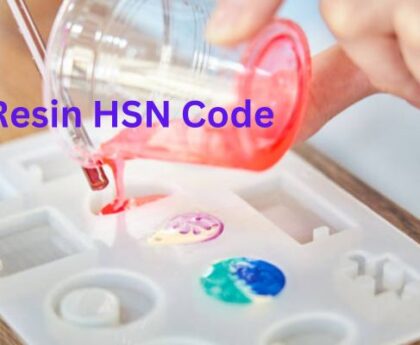Understanding Resin Codes: A Guide for Identifying and Recycling Plastics
In today’s world, plastic is omnipresent, and resin a type of plastic and every resin has resin codes. This is used from packaging and household items to automotive parts and medical devices, plastics play a crucial role in our daily lives. However, with this widespread use comes the challenge of recycling and managing plastic waste. One tool that helps in this effort is the resin identification code, commonly known as the resin code. In this article, we’ll delve into what resin codes are, why they matter, and how they aid in the recycling process.
What Are Resin Codes?
Resin codes are a set of symbols introduced in 1988 by the Society of the Plastics Industry (SPI) to help identify the type of plastic material used in a product. These codes, ranging from 1 to 7, are typically found on the bottom of plastic containers and are enclosed in a triangle of arrows. Each number corresponds to a specific type of plastic resin.
The Seven Resin Codes
- PET (Polyethylene Terephthalate) – Code 1
- Uses: This is used for soft drink bottles, water bottles, food packaging.
- Recycling: This is widely recycled. Recycled PET can be turned into new containers, fabric for clothing, carpets, and more.
- HDPE (High-Density Polyethylene) – Code 2
- Uses: This is used for milk jugs, detergent bottles, juice bottles, grocery bags.
- Recycling: Commonly recycled. Recycled HDPE is used to make plastic baseball, piping, and new bottles.
- PVC (Polyvinyl Chloride) – Code 3
- Uses: This is used in pipes, clear food packaging and shrink wrap.
- Recycling: Less commonly recycled due to the release of hazardous chemicals during the process. Often repurposed for pipes and construction materials.
- LDPE (Low-Density Polyethylene) – Code 4
- Uses: This is used in shopping bags, bread bags, some food wraps.
- Recycling: Not as widely recycled, but some programs accept it. Recycled LDPE can be used for garbage can liners and floor tiles.
- PP (Polypropylene) – Code 5
- Uses: This is used for yogurt containers, straws, bottle caps and some automotive parts.
- Recycling: Increasingly accepted in recycling programs. Recycled PP is used for signal lights, battery cables, and trays.
- PS (Polystyrene) – Code 6
- Uses: This is used for disposable coffee cups, plastic food boxes and plastic cutlery.
- Recycling: Not commonly recycled due to its low density and high volume, which makes it less economical. When recycled, it can be used for insulation, egg cartons, and more.
- Other (Various) – Code 7
- Uses: This is used in Includes polycarbonate, bioplastics, and other plastics not classified under codes 1-6.
- Recycling: Varies widely due to the different types of plastics. Some are recyclable, while others are not. Items made from Code 7 plastics can include sunglasses, DVDs, and certain food containers.
Why Resin Codes Matter
Understanding resin codes is crucial for several reasons:
- Recycling Efficiency: Correctly identifying plastic types ensures that they are sorted appropriately, which enhances the efficiency and effectiveness of recycling programs.
- Environmental Impact: Proper recycling of plastic helps to reduce plastic waste in landfills and oceans, minimising environmental pollution and conserving natural resources.
- Health and Safety: Some plastics can leach harmful chemicals. Knowing the resin code helps in making safer choices for food and beverage storage.
Tips for Using Resin Codes
- Check Labels: Always check the bottom of plastic containers for the resin code before recycling.
- Follow Local Guidelines: Recycling capabilities vary by location. Check with your local recycling program to see which resin codes they accept.
- Reduce and Reuse: Beyond recycling, consider ways to reduce plastic use and reuse items where possible.
Conclusion
Resin codes play a vital role in the management and recycling of plastic products. By understanding these codes and their implications, consumers can take decisions about use of plastic and disposal, contributing to a healthier environment. Always remember to check for resin codes, follow local recycling guidelines, and do your part in reducing plastic waste.

